Prospecting & Detecting
A Short History of Hydraulic Mining in California
December 2021 by Josh Reinke
I was exploring an old creek one day when I came across a large dam. I had no clue what I was looking at. Why would someone build a dam on a small creek? To add to the confusion, the dam wasn’t holding back a large amount of water. It was full of gravels and had a small creek running through it. I had to know more!
Once I got home, I started looking on the internet to figure out what this old concrete dam was doing out in the middle of nowhere. After researching for hours, I found the answer—this was used for hydraulic mining. What does a dam have to do with hydraulic mining, you ask? Well, let me tell you some history before I answer that question.
Now part of Tahoe National Forest lands, Joubert’s Diggings, a.k.a. the Depot Hill Mine, was one of the oldest continuously operating placer mines in California. It was started in 1852 by J. Joubert, brother of Frederick J. Joubert, who operated the mine for many years.
Frederick was a native of France, where he had been a schoolteacher. Passing through Panama and staying for a while in San Francisco, he came to the Camptonville area in 1867, following four brothers who had come to mine gold in the area in 1852. He ran Joubert’s Diggins hydraulic mine until his retirement in 1907 due to failing health. He died in 1921. His son Fred, who had worked at the mine for many years, carried on the mining operations.
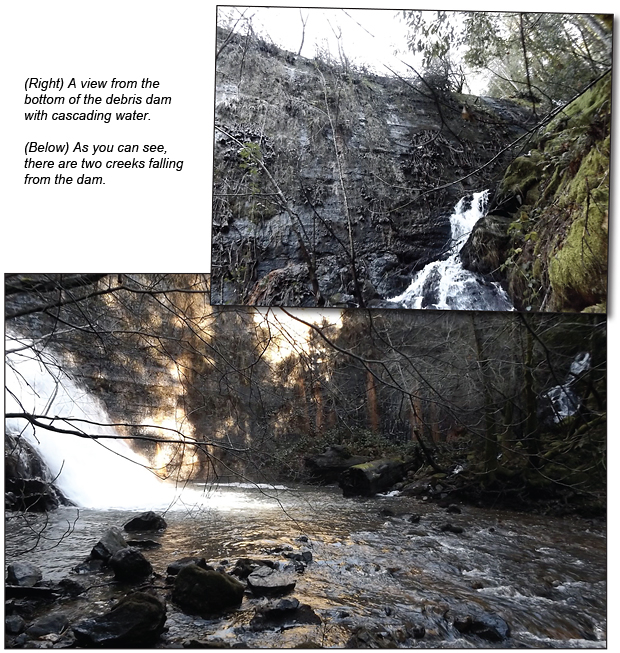 Fred Joubert was born in Camptonville in 1882. He was the oldest of four children. He attended the Camptonville grammar school, then attended the preparatory school at Santa Clara College and Berkeley High School. After graduating in 1902, he attended the University of California, studied mining engineering, and graduated in 1906. During the 1906 earthquake in San Francisco, Joubert served as first lieutenant in the University Cadets and was later commissioned captain. He assisted the Red Cross in relief efforts. After the catastrophe, he returned to Camptonville to help his father with the mine. After his father retired, he assumed management of operations. Fred Joubert (1882-1921) was married to Martha Meek, daughter of Camptonville pioneer merchant William B. Meek. Their daughter, Lesta Harriet Joubert (1909-1986), was a historian, longtime educator, and principal of Marysville High School whose gymnasium bears her name.
Fred Joubert was born in Camptonville in 1882. He was the oldest of four children. He attended the Camptonville grammar school, then attended the preparatory school at Santa Clara College and Berkeley High School. After graduating in 1902, he attended the University of California, studied mining engineering, and graduated in 1906. During the 1906 earthquake in San Francisco, Joubert served as first lieutenant in the University Cadets and was later commissioned captain. He assisted the Red Cross in relief efforts. After the catastrophe, he returned to Camptonville to help his father with the mine. After his father retired, he assumed management of operations. Fred Joubert (1882-1921) was married to Martha Meek, daughter of Camptonville pioneer merchant William B. Meek. Their daughter, Lesta Harriet Joubert (1909-1986), was a historian, longtime educator, and principal of Marysville High School whose gymnasium bears her name.
Although most hydraulic mining was outlawed with the landmark Sawyer Decision in 1884, the Jouberts continued mining on a small scale by building dams to limit the flow downstream of mining debris. The elder Joubert first built a log dam in 1884. From 1908-1916, son Fred constructed a 58-foot concrete dam in three phases three miles downstream. He also helped build other small debris dams in the area. The Joubert Mining Company mined in the wet season with a handful of miners. In the drier months, the employee miners worked as loggers.
The book, California: A Guide to the Golden State (1939), reported the Joubert Hydraulic Mine at Depot Hill produced $1,850,000 in its 82 years of continuous operation.
Downstream, concerns arose about the tailings from hydraulic mines. The more that water blasted the hillsides, the greater the debris problem. Riverside farms were flooded and destroyed. Silt was estimated to fill San Francisco Bay at the rate of a foot each year, while the Yuba, Feather, and Sacramento rivers were closed to steamboat traffic due to the high silt levels. Many valley towns depended on the miners for income, so they just built tall levees for flood control.
At the confluence of the Yuba and Feather rivers, the town of Marysville flooded in 1875. Its levees created a large bowl for the floodwaters, killing some residents and destroying their property. Surviving Marysville residents formed the “Anti-Debris Association” and asked the state legislature to regulate mining operations, but several years of legal battles and vandalism followed. Marysville property owner Edward Woodruff filed suit in 1882 against the mining companies. In 1883, the Yuba River’s 130-foot-tall English dam burst—sabotage was suspected.
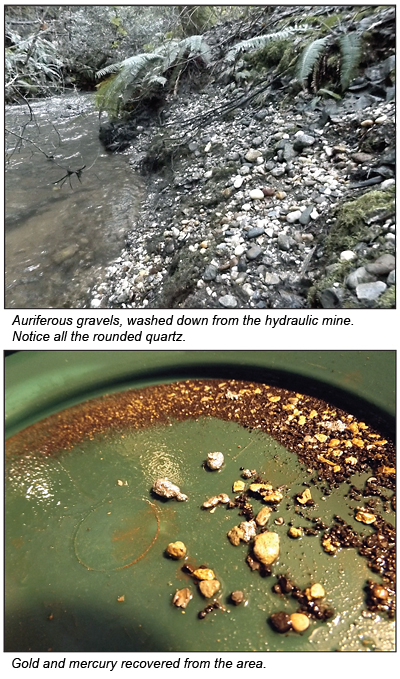 On January 7, 1884, Judge Lorenzo Sawyer handed down his decision in the case of Woodruff v. the North Bloomfield Gravel Company. Sawyer’s 225-page decision disallowed miners from dumping debris into watercourses, although this did not stop many of the miners like the Jouberts.
On January 7, 1884, Judge Lorenzo Sawyer handed down his decision in the case of Woodruff v. the North Bloomfield Gravel Company. Sawyer’s 225-page decision disallowed miners from dumping debris into watercourses, although this did not stop many of the miners like the Jouberts.
So, now that we know the history of this large dam I stumbled across, let’s talk about the gold they left behind. The pictures of gold shown in this article were recovered several miles downstream from the mine. We found two-gram pieces and smaller—most of it was coated with mercury. As you can see, the miners’ old techniques were not always very affective at recovering all the gold. They also used copper plates lined with mercury to help recover the gold. Obviously, much of it was washed downstream, which is why the gold I found years ago was covered in mercury.
Mercury is dangerous when mishandled, but a knowledgeable person can remove the mercury from a creek safely and collect it using a retort. California used to have mercury collection locations, but they have been shut down for years. Legacy mining did create a lot of issues, but today’s miners are working hard to correct that and remove the mercury from rivers and streams. Today’s mining practices include gravity separation to collect gold and other heavy pollutants, using just water and gravity with no additional pollutants added to the water. In fact, we remove most pollutants, including mercury.
Despite heavy warnings and anti-mining propaganda, there has never been a case of mercury poisoning in California due to eating fish from these rivers and creek. This is because once mercury is deposited in the water, it joins together to become a solid mass. Even though it is a “transitional metal”—meaning it can take different forms such as gas or a liquid—it is a heavy metal that drops to the bottom of the watercourse. It then stays where it is, never getting a chance to turn to its dangerous gas form until a miner comes along and removes it and then properly disposes of it.
My question is, would you like the mercury to be removed or just left in our creeks and rivers? I say remove it!
_______________
Sources
Delay, Peter J., History of Yuba and Sutter Counties, California, Historic Record Co., 1924.
MacBoyle, Errol, Mines and Mineral Resources of Sierra County, California, California State Mining Bureau, 1920.
Federal Writers’ Project of the Works Progress Administration of Northern California, California: A Guide To The Golden State, New York: Hastings House, 1939. 
How Should I Work This Prospect?
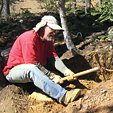 How big is the deposit? Are there boulders you will need to move? Do you just want to recover the nuggets or do you think there is good fine gold that you will also want to capture?
How big is the deposit? Are there boulders you will need to move? Do you just want to recover the nuggets or do you think there is good fine gold that you will also want to capture?
Detectors Versus Pans
 Mike scored the best with a total of one-half ounce of gold nuggets. Tom, Brian and Greg each had pieces in the one and a half pennyweight range. The rest of us had small gold and nothing like these three.
Mike scored the best with a total of one-half ounce of gold nuggets. Tom, Brian and Greg each had pieces in the one and a half pennyweight range. The rest of us had small gold and nothing like these three.
Our Readers Say
- Conversion charts and tables
- Solutions to anti-mining efforts
Give That Club Claim A Chance
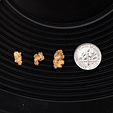 My first trip to the claim was the tip-off that there might be larger gold to be found. I brought my puffer drywasher and my dad to a local prospecting club outing that was held at the claim.
My first trip to the claim was the tip-off that there might be larger gold to be found. I brought my puffer drywasher and my dad to a local prospecting club outing that was held at the claim.The Birthday Nugget Patch
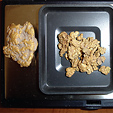 Down around 10 or 12 inches I hit a large cobble that appeared to be one type of hot rock for this area. I thought bad things about the new technology until I checked the rock.
Down around 10 or 12 inches I hit a large cobble that appeared to be one type of hot rock for this area. I thought bad things about the new technology until I checked the rock.
PLP Update: Back to The 'Swamp' on Behalf of Small Miners
 We spent the morning in a meeting with one of the higher-ups at the US Forest Service. I presented him with 412 complaints received from our readers, along with a summary of the complaints to make his job easier.
We spent the morning in a meeting with one of the higher-ups at the US Forest Service. I presented him with 412 complaints received from our readers, along with a summary of the complaints to make his job easier.
Gold Prospecting in Gatesville, Indiana
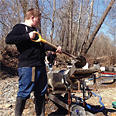 Gatesville is not the only place to find easy public access for gold prospecting opportunities in Central Indiana.
Gatesville is not the only place to find easy public access for gold prospecting opportunities in Central Indiana.
Subscription Required:
The Bawl Mill
• Ask The Experts - Will a rare earth magnet work for finding gold deposits?
• Ask The Experts - Any at home tests for platinum/palladium?
• Ask The Experts - Should I use headphones or go without?
• Residual Placers: An Often Overlooked Gold Source
• USFS OKs Exploratory Drilling in Eastern Idaho
• Gold Basin & Mass Wasting
• How Far To The Gold?
• Gold Prospecting for Better or Worse: Warm Buttocks and Frozen Assets
• The Joys of Desert Prospecting
• Melman on Gold & Silver
• Mining Stock Quotes and Mineral & Metal Prices
Free:
Legislative and Regulatory Update
• An Early Christmas Gift
• PLP Update







